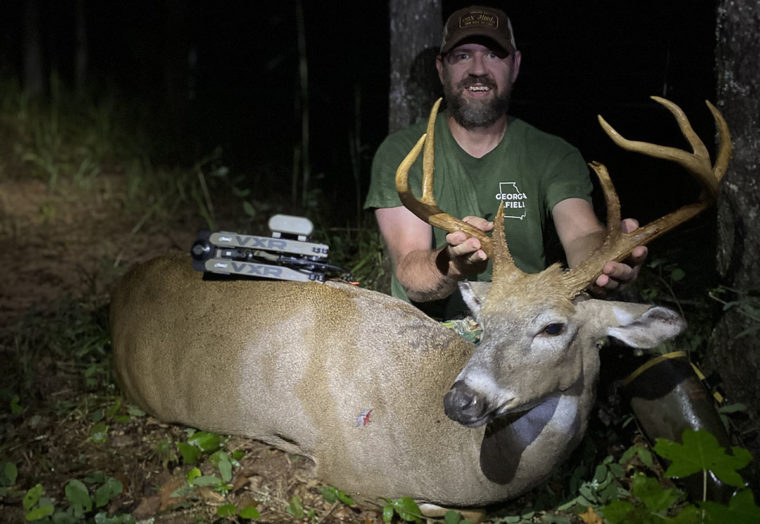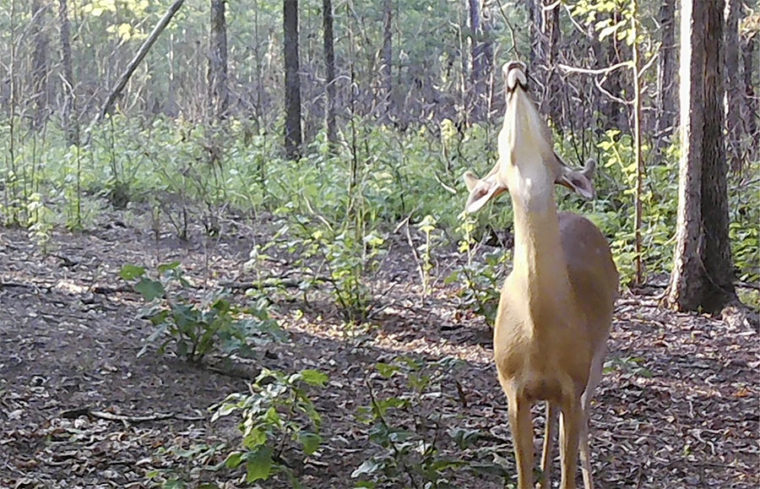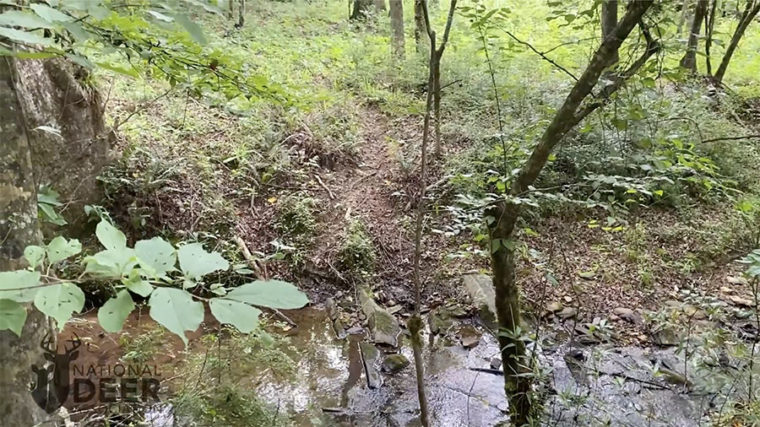One of my favorite summertime activities leading into deer season is running trail-cameras. And while I keep a few out on my small property where I live, the bulk of my trail-camera efforts take place on public land. Unlike private land where I can put out corn or other forms of attraction to get deer in front of my cameras, that’s not an option on public lands here in Georgia. So it takes a little different strategy to get a good sampling of the deer that are using my favorite tracts of public land. If you are in a similar situation where you hunt, try hanging some cameras in one or more of these three types of spots this summer and see if your photo count doesn’t increase, along with the quality of bucks you get on camera.
1) Drainage Ditches
One of my favorite places to hang trail-cameras on public land is at the head of a steep drainage ditch that runs up the side of a ridge — particularly when that ridge has good, thick cover on top. I found such a spot on one of my favorite Georgia WMAs while summer scouting last year and hung a Moultrie trail-camera over the trail at the head of the ditch. When I did my first camera check of the season a month later, in late July, I was excited to see that numerous bucks were using the travel funnel, often during daylight hours. One particularly nice 8-pointer was there more evenings than not as the season approached. Opening evening of Georgia’s archery deer season found me perched in a pine tree just 20 yards from my camera. Just moments after sunset, a mature 7-pointer came in and offered me a great 20-yard shot. It wasn’t the 8-pointer I was after, but I was ecstatic to put my tag on a fine Georgia buck.

2) Mock Scrapes
When I find an area that really looks good to me, but without any type of funnel or pinch-point nearby, I like to incorporate a mock scrape to get deer in front of my trail-camera. Creating a mock scrape is a very simple process, and you’ll be surprised how effective it can be, even in the middle of summer! We have a great article on our website that details how to create a mock scrape, so I won’t dive into too much detail here, but it’s as easy as finding a low-hanging branch, clearing out the leaves underneath and peeing in your new scrape — no expensive bottled deer urine necessary! Last year was the first time I tried creating a mock scrape in the summer, around the end of June, and I was shocked at how quickly the bucks began using it, and by how many different bucks I got on camera throughout the season.

3) Creek Crossings
If you’re new to running trail-cameras on public land and overwhelmed by the prospects of finding places to hang your cameras, creek crossings can be great spots to start. Break our your onX Hunt app, turn on topo mode and find some of the primary creeks on the public land you are hunting. You can then put boots on the ground and start walking these creeks looking for obvious signs of where the deer cross. Unless you are hunting an area with an extremely low deer density, good creek crossings shouldn’t be too hard to find. The key is to look for ones in close proximity to good cover. While any good creek crossing is a prospect for a trail-camera, with limited cameras, I prefer to focus on those thick areas where I think a mature buck is more likely to feel safe moving during daylight hours.

Final Thoughts
Running trail-cameras on your favorite tracts of public land can be an exciting way to prepare for the upcoming deer season and can definitely tip the odds in your favor this fall. Yes, you will run the risk of having a camera stolen, but that can happen on private land too. I try to keep my cameras in places off the beaten path (which is often where the deer will be anyway!), and I carry a climbing stick with me so I can place them in trees 10 to 12 feet off the ground. This keeps them out of the line-of-sight of most people passing by, and if they see it, they’ll have to work a little harder to get it down. If you’re really concerned about theft, you can take it one step further and add a Python cable lock to the camera as an extra level of security. Take these precautions, set your worries aside and get those cameras out on your favorite tract of public land!











































